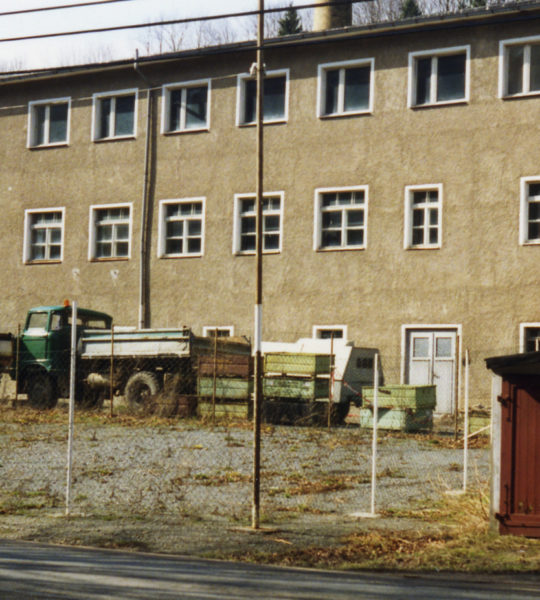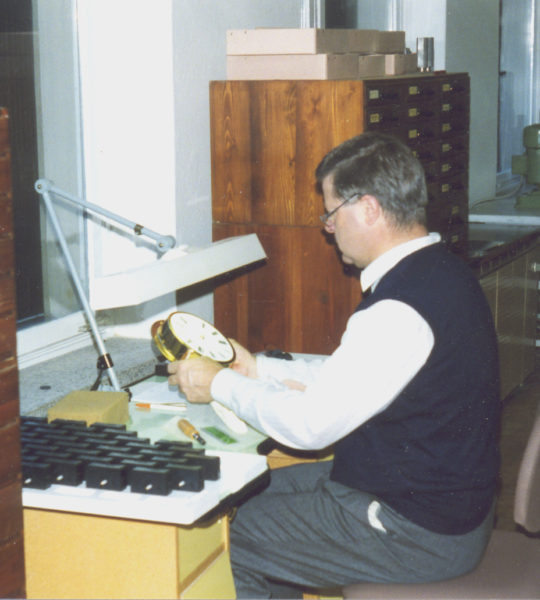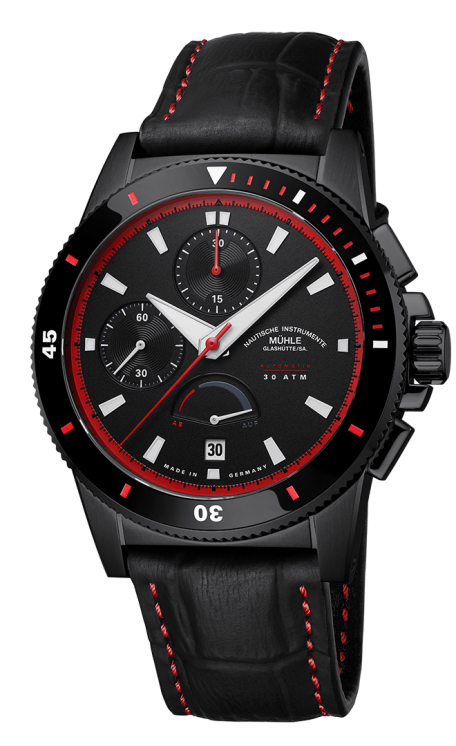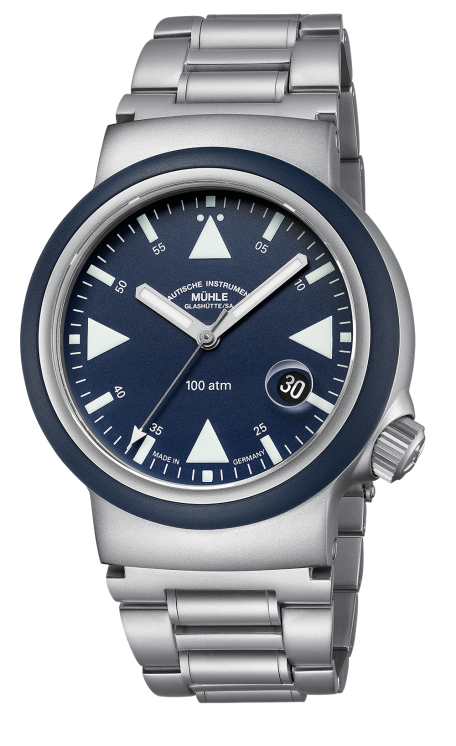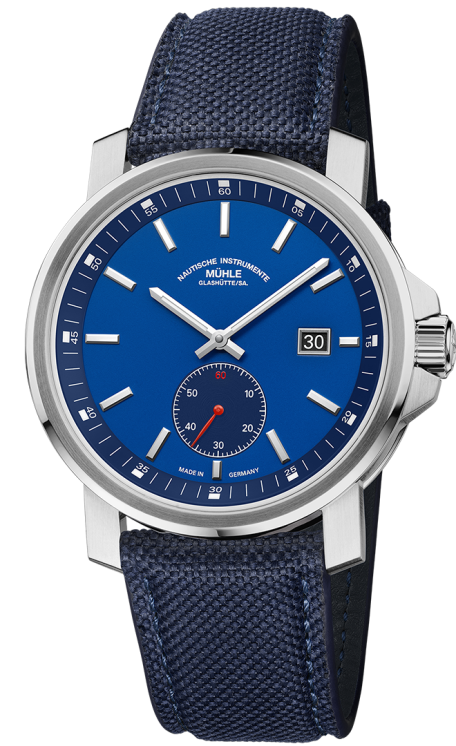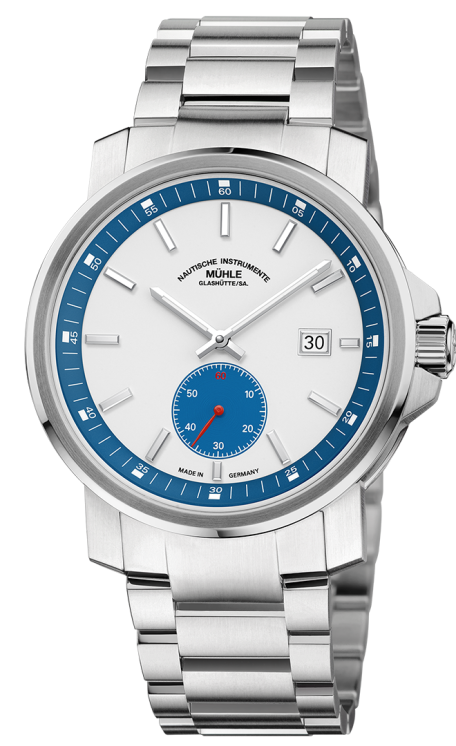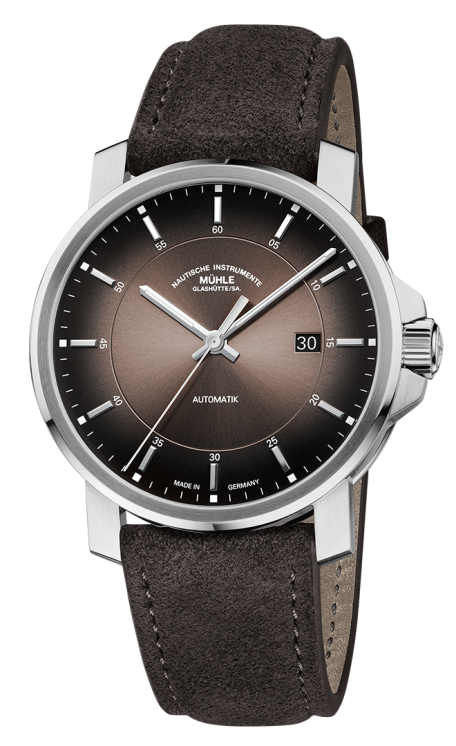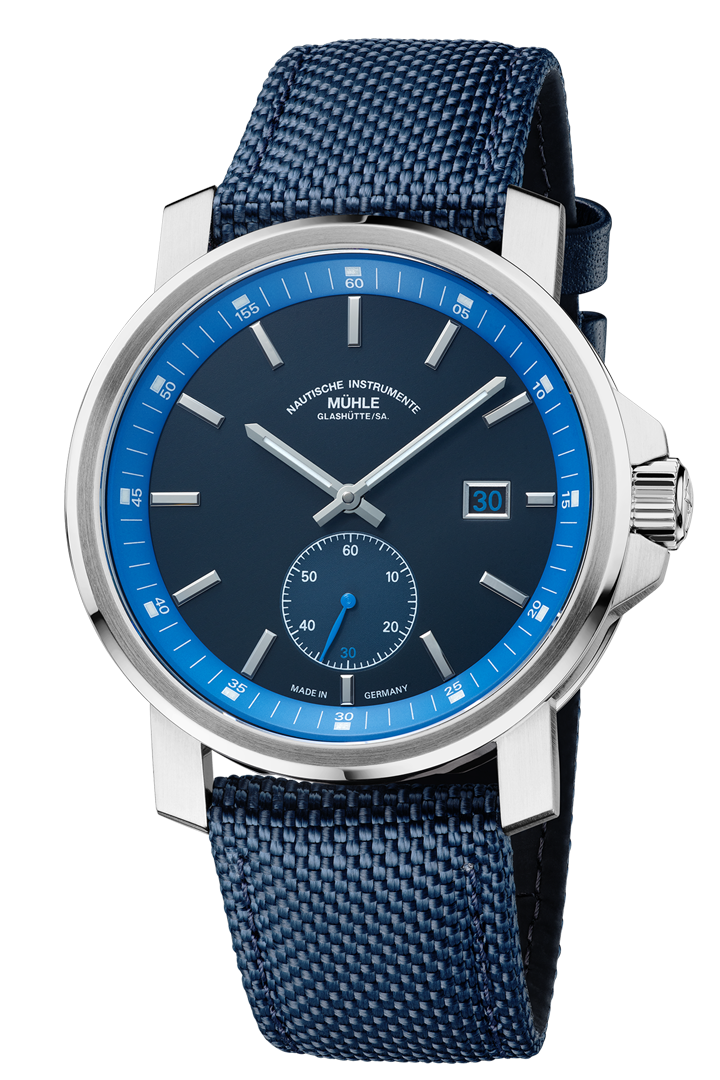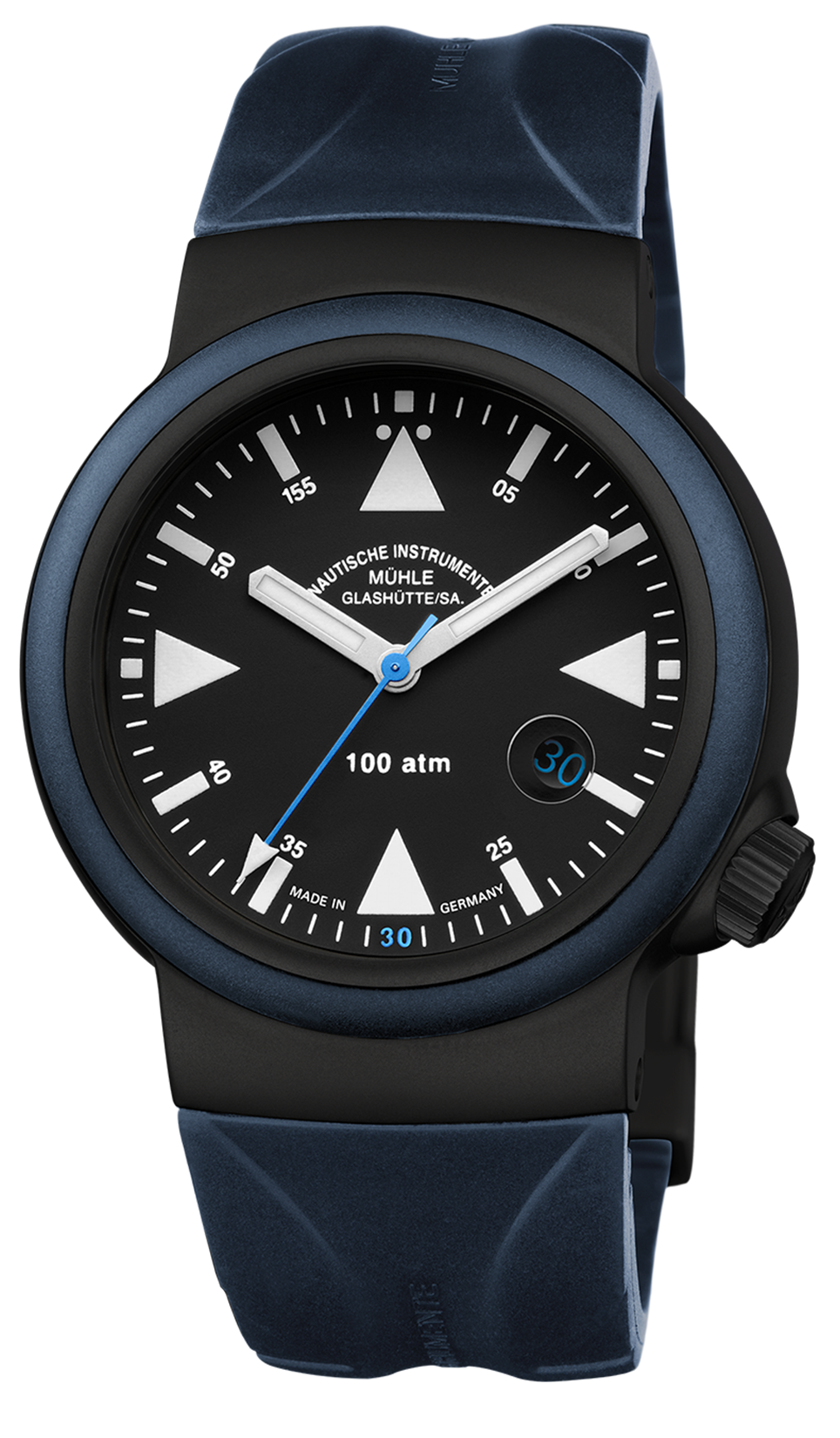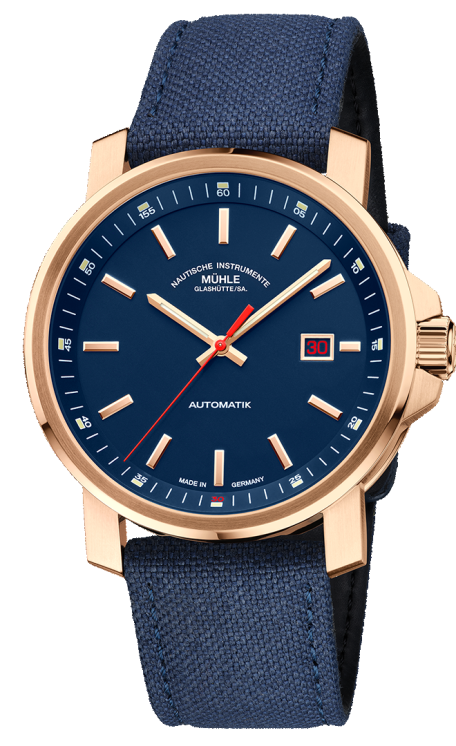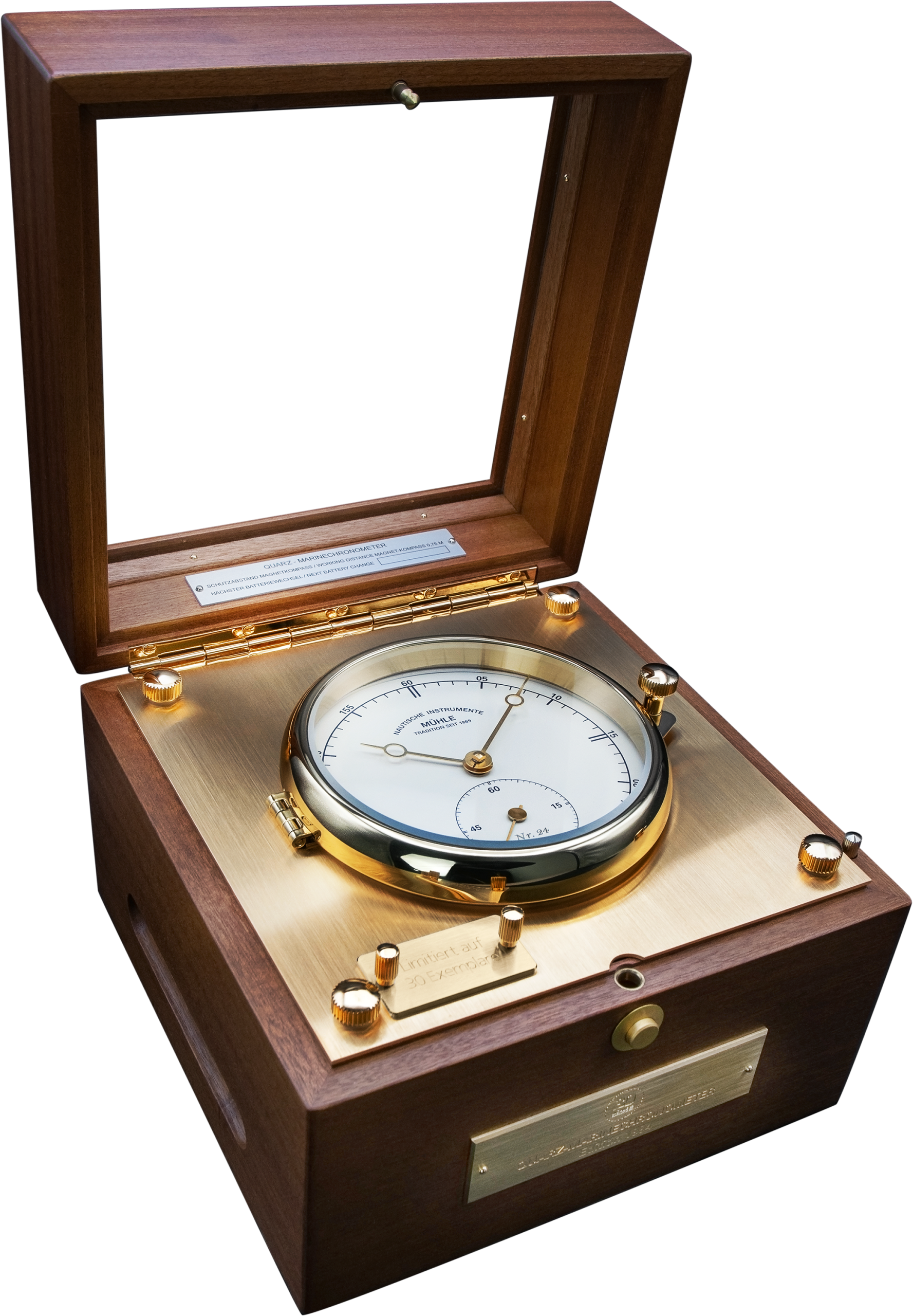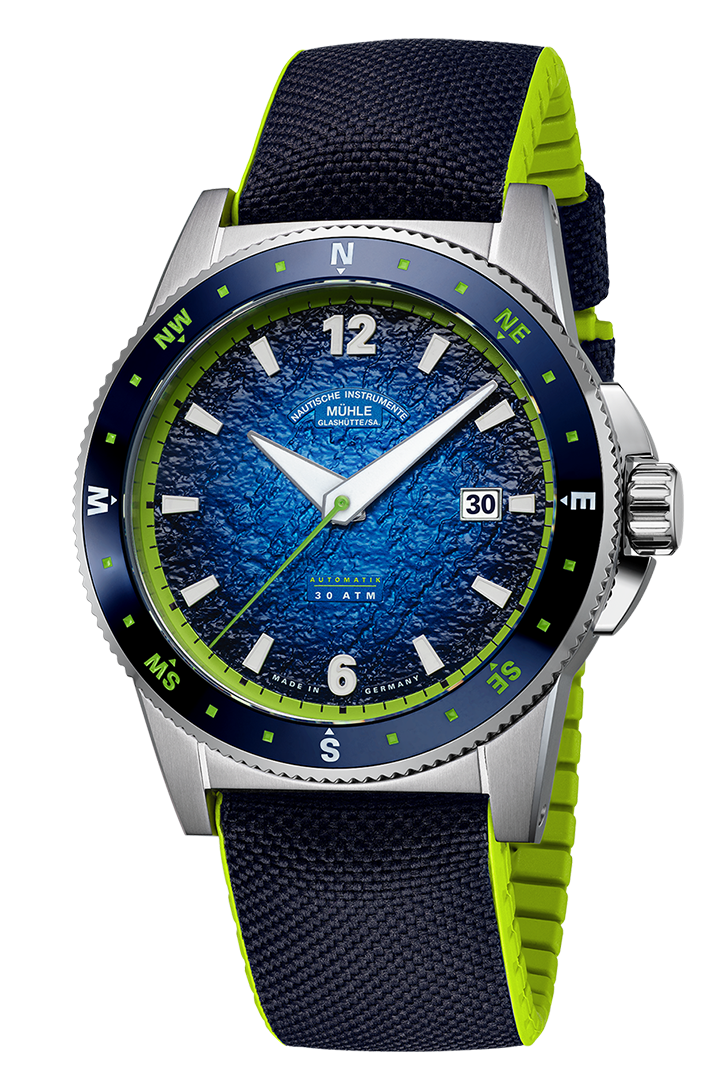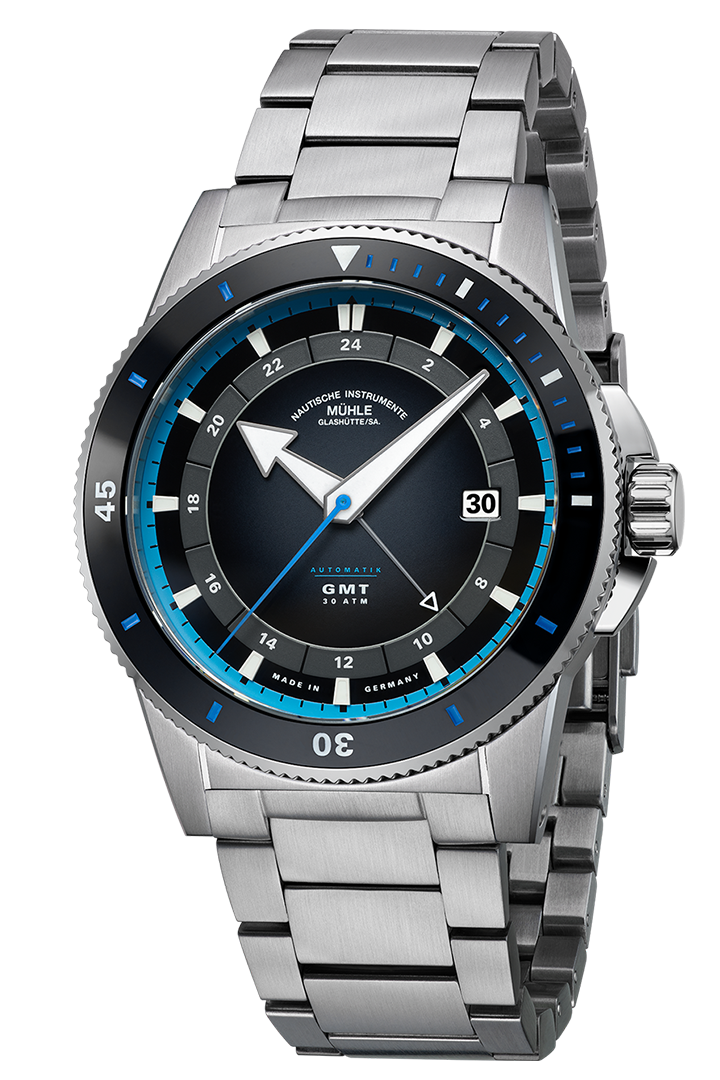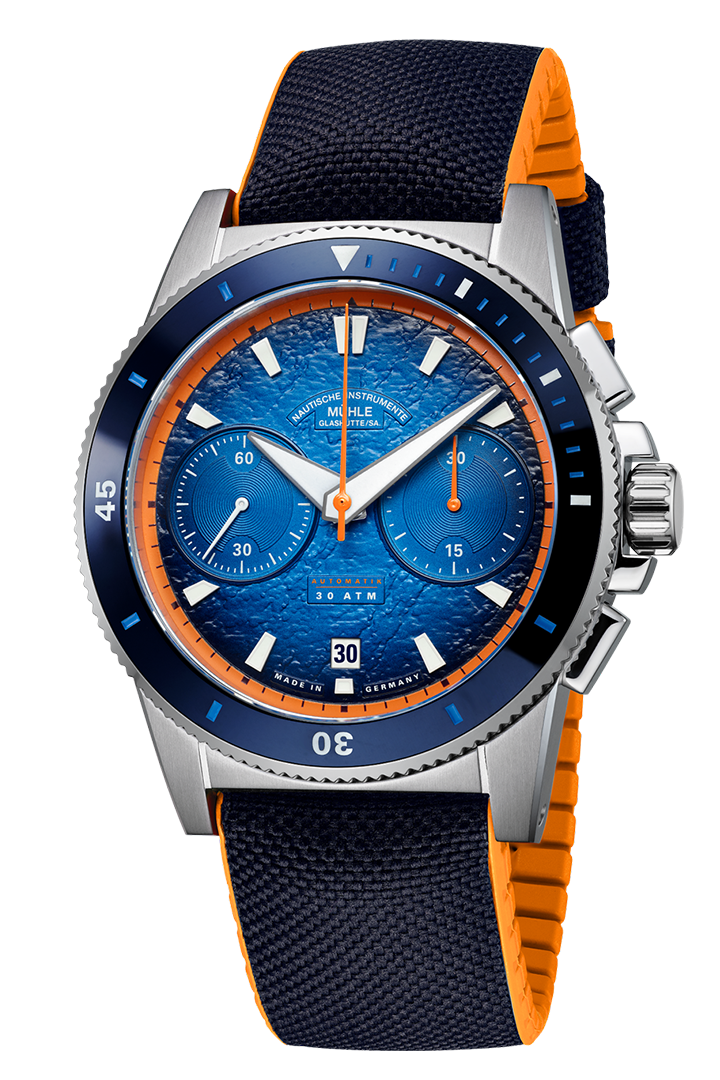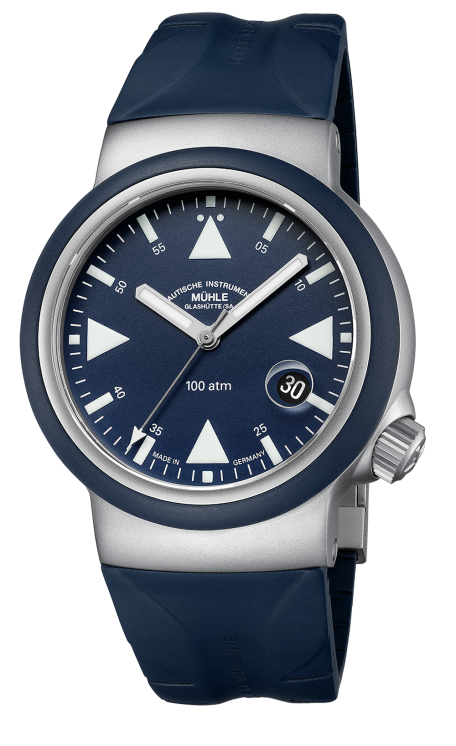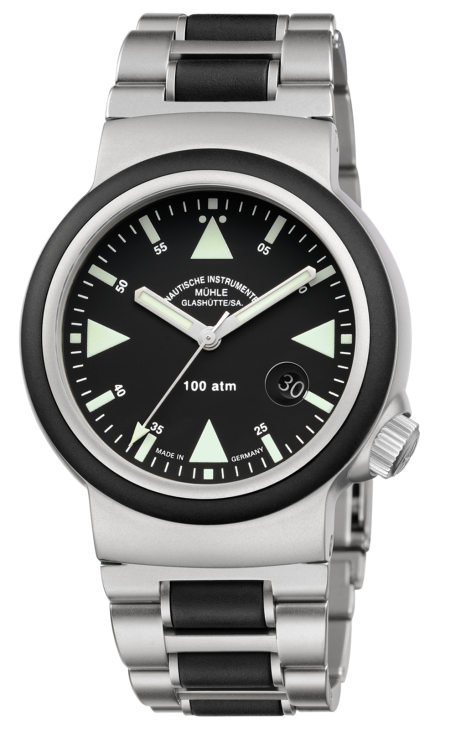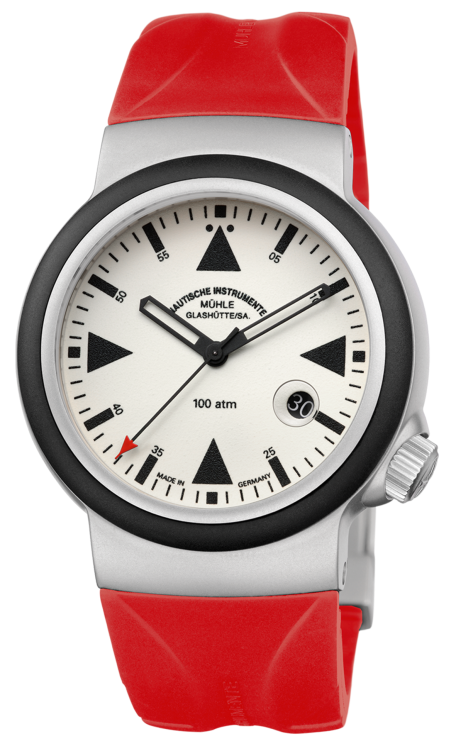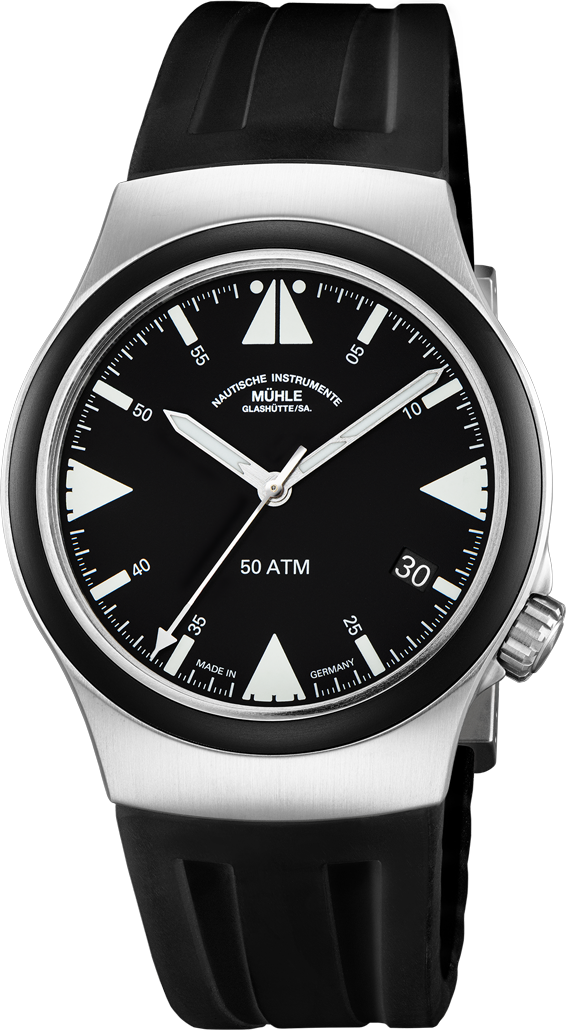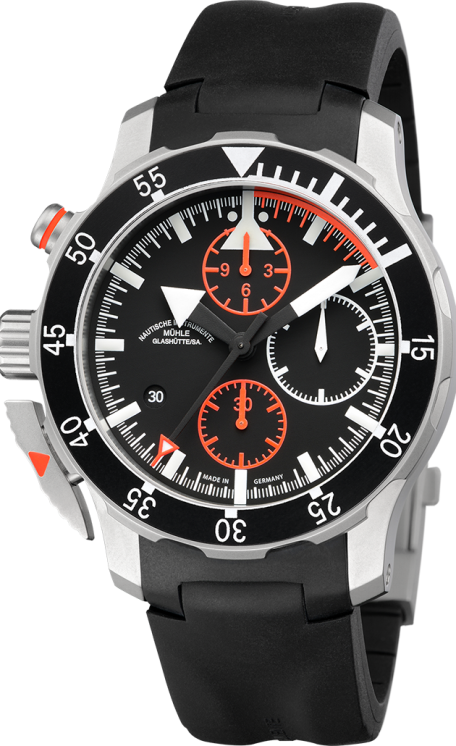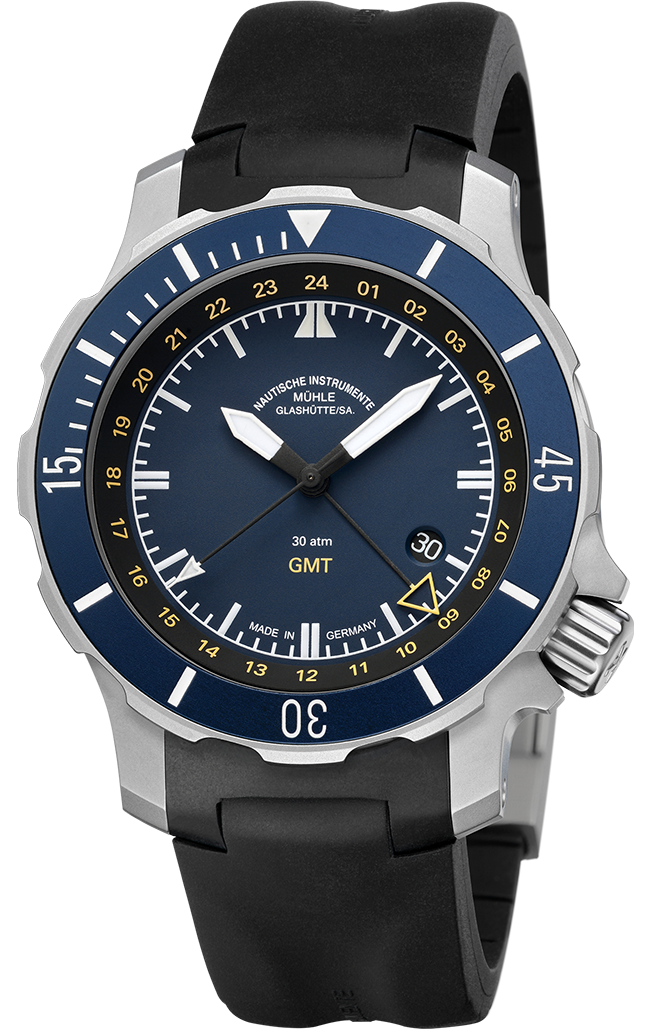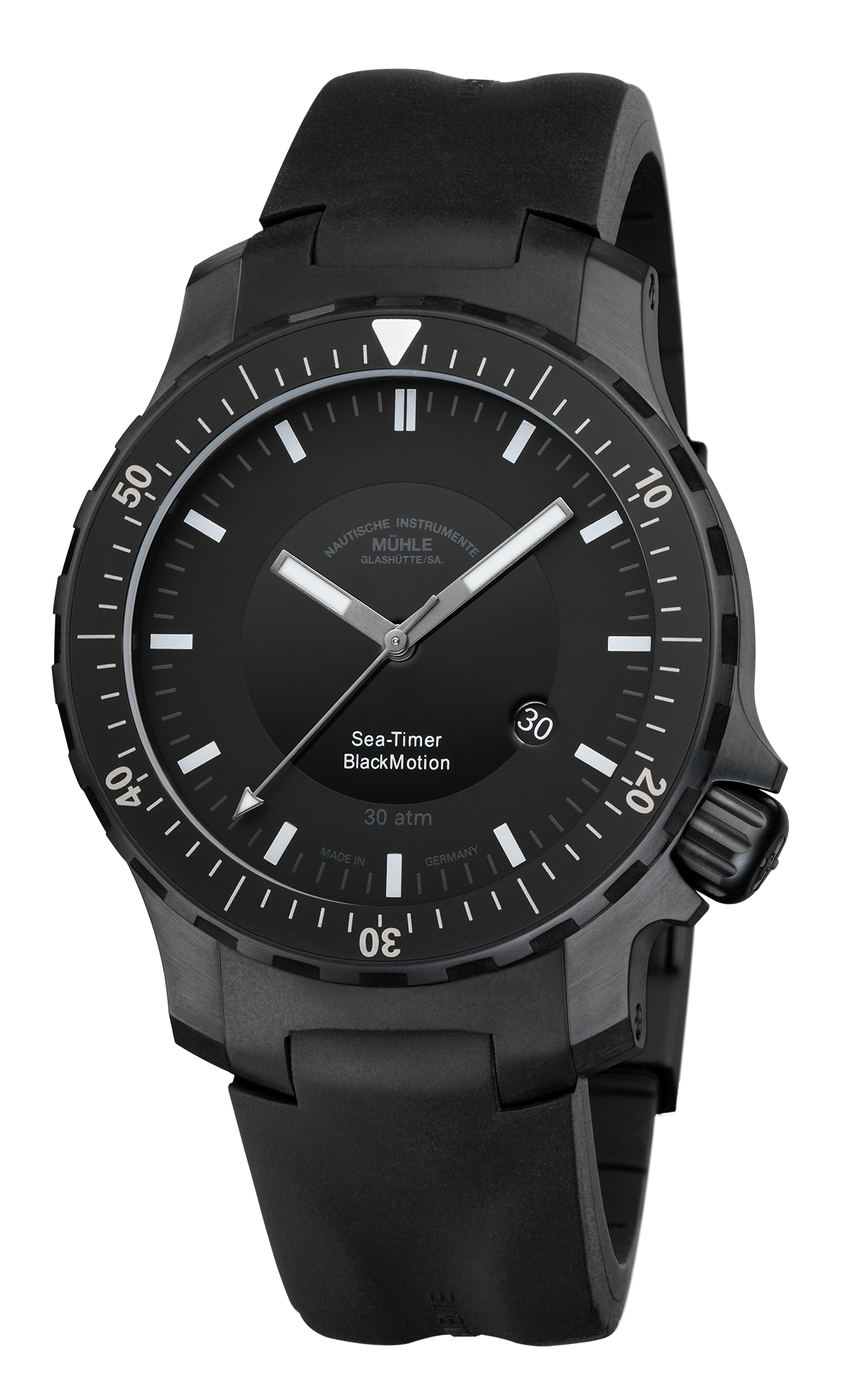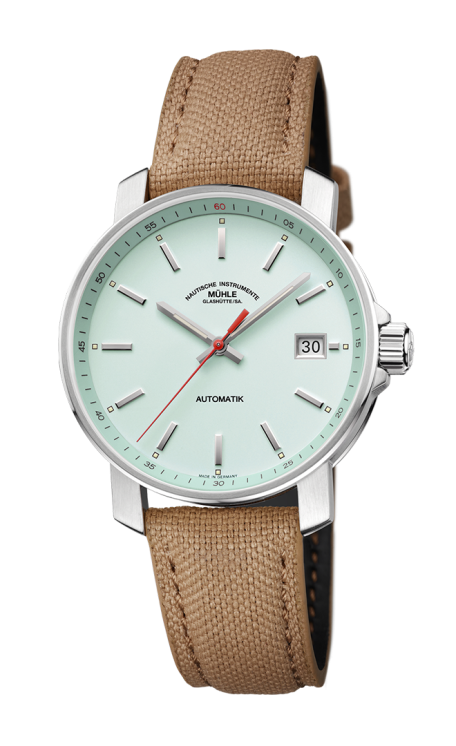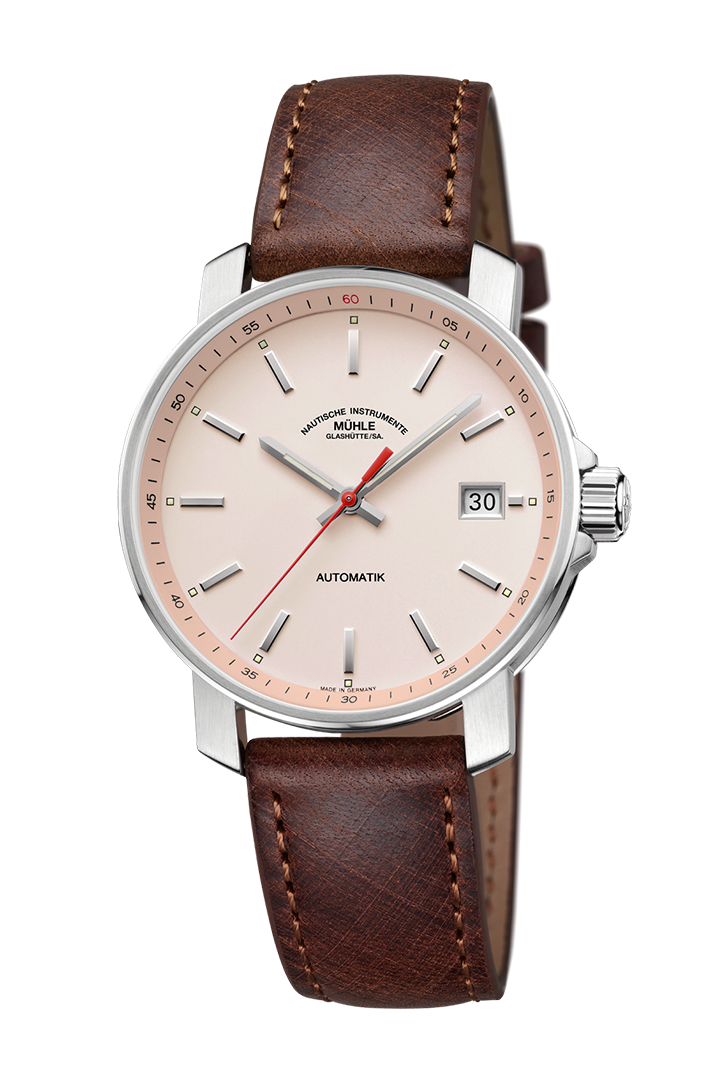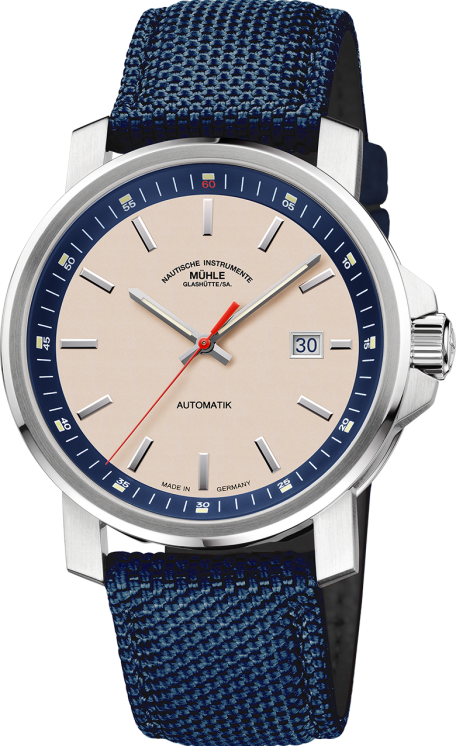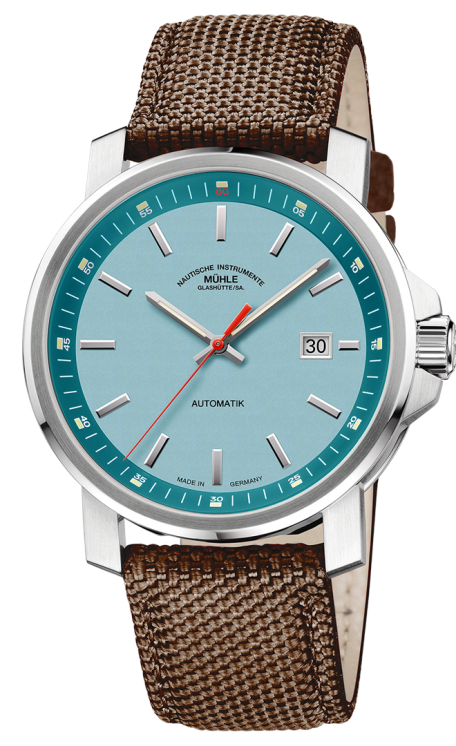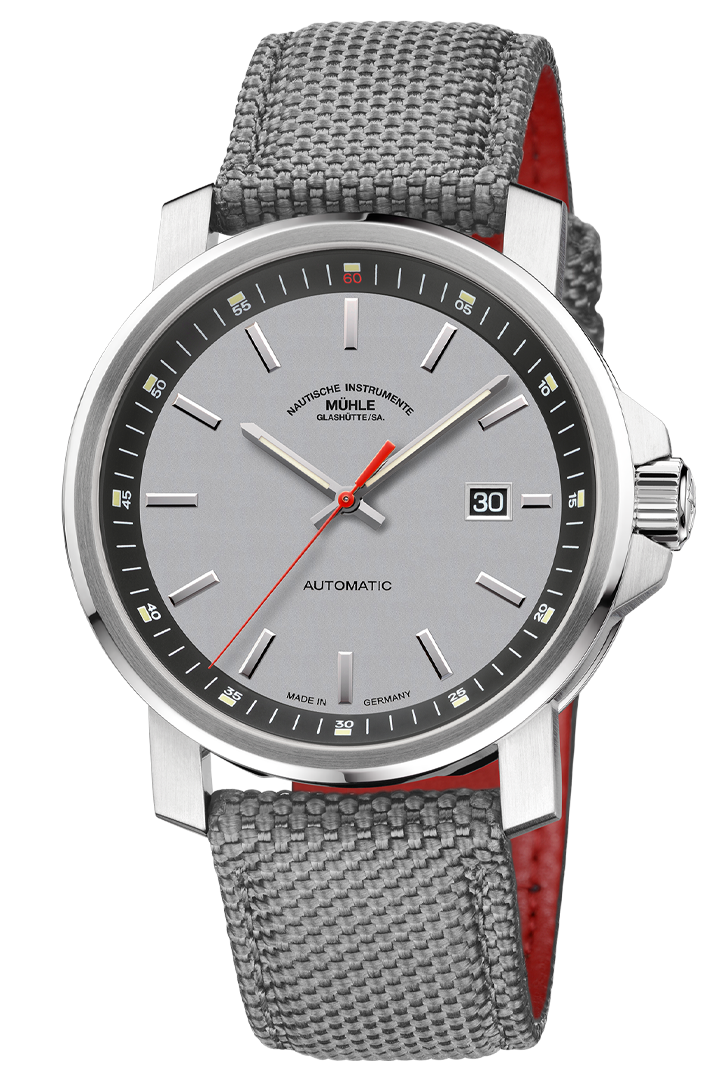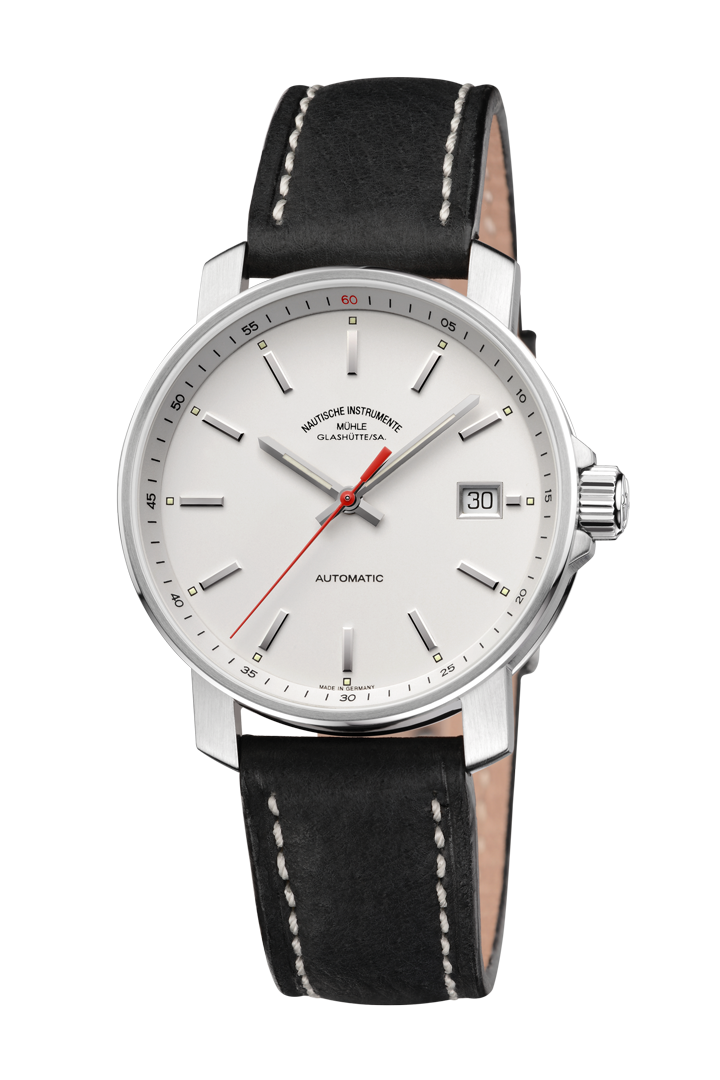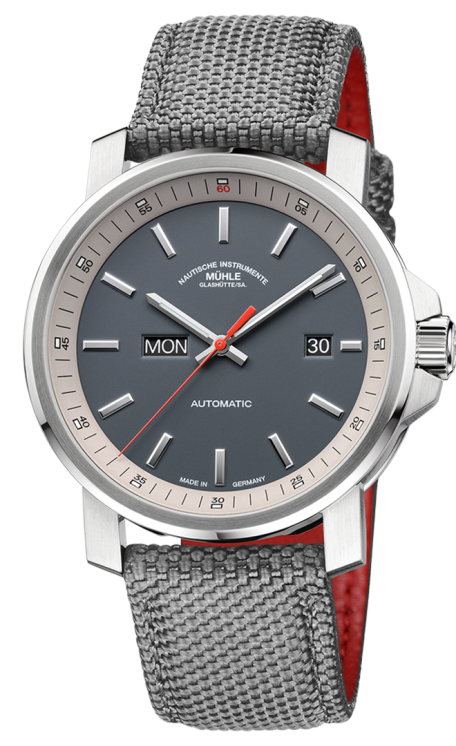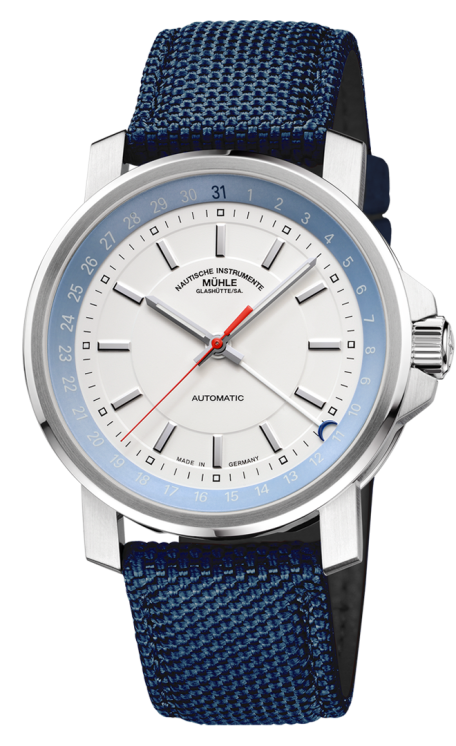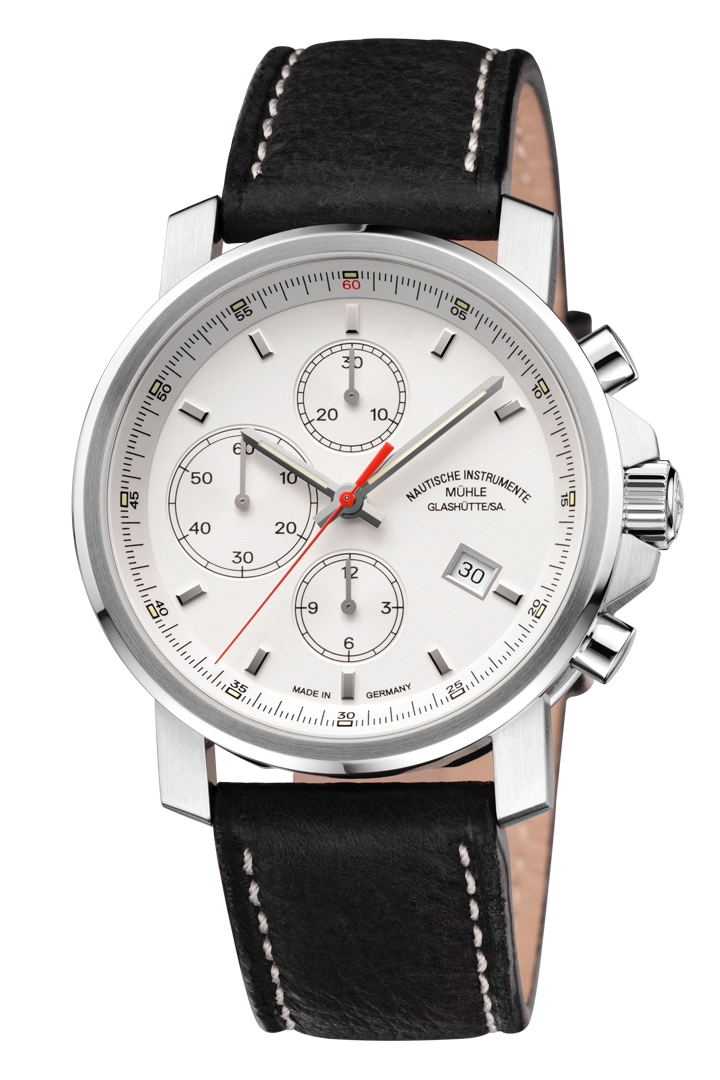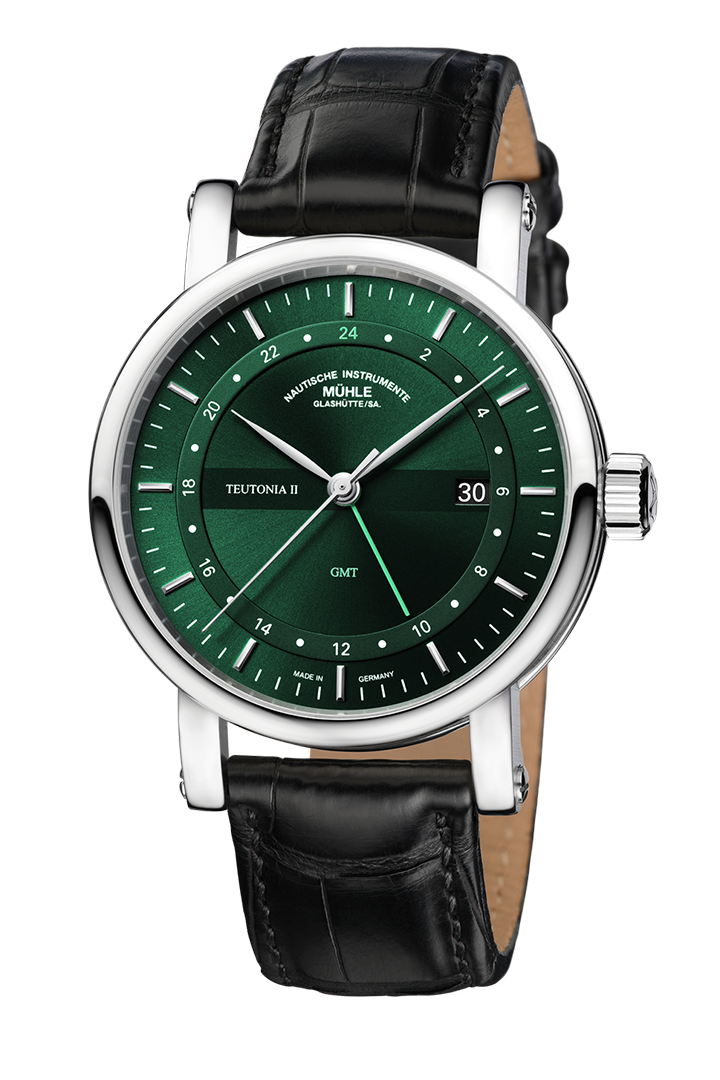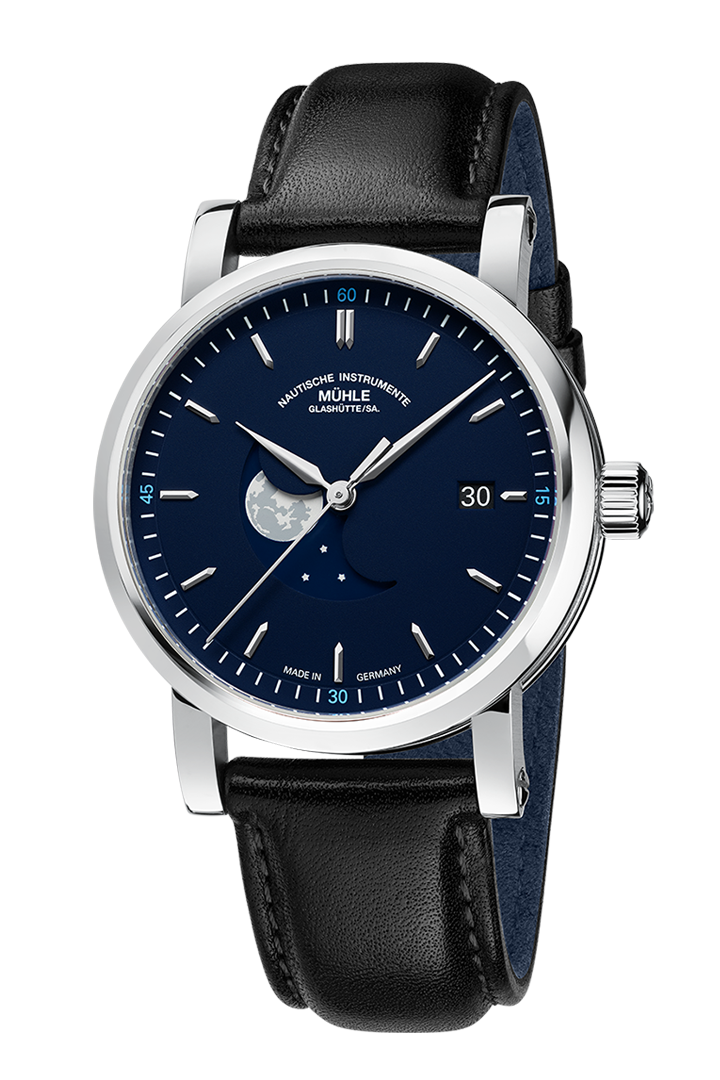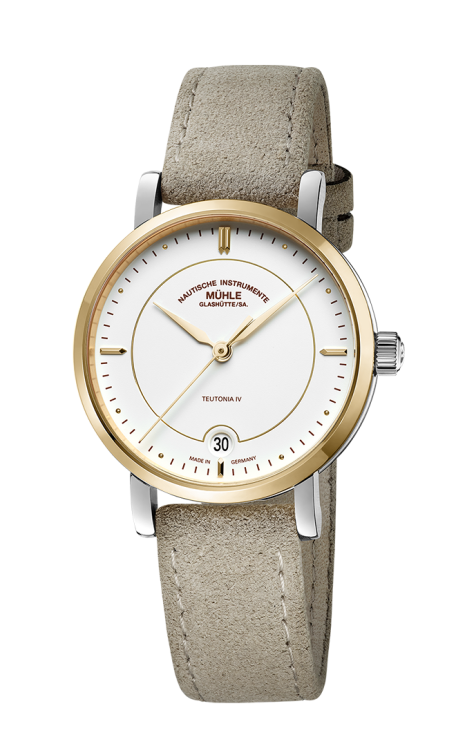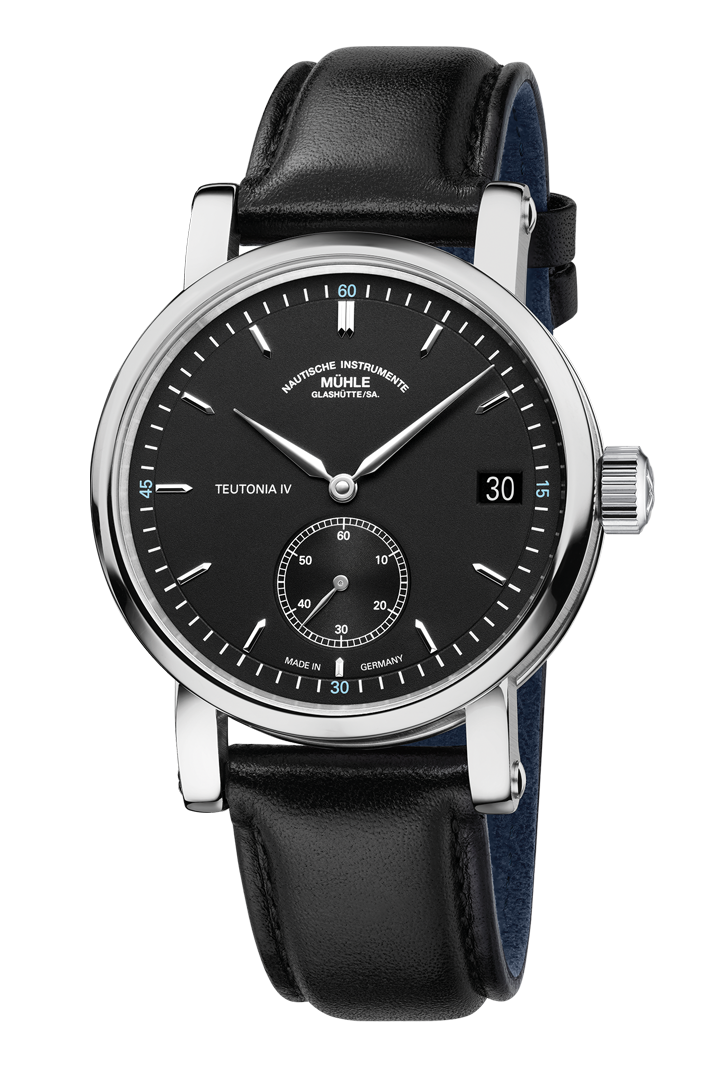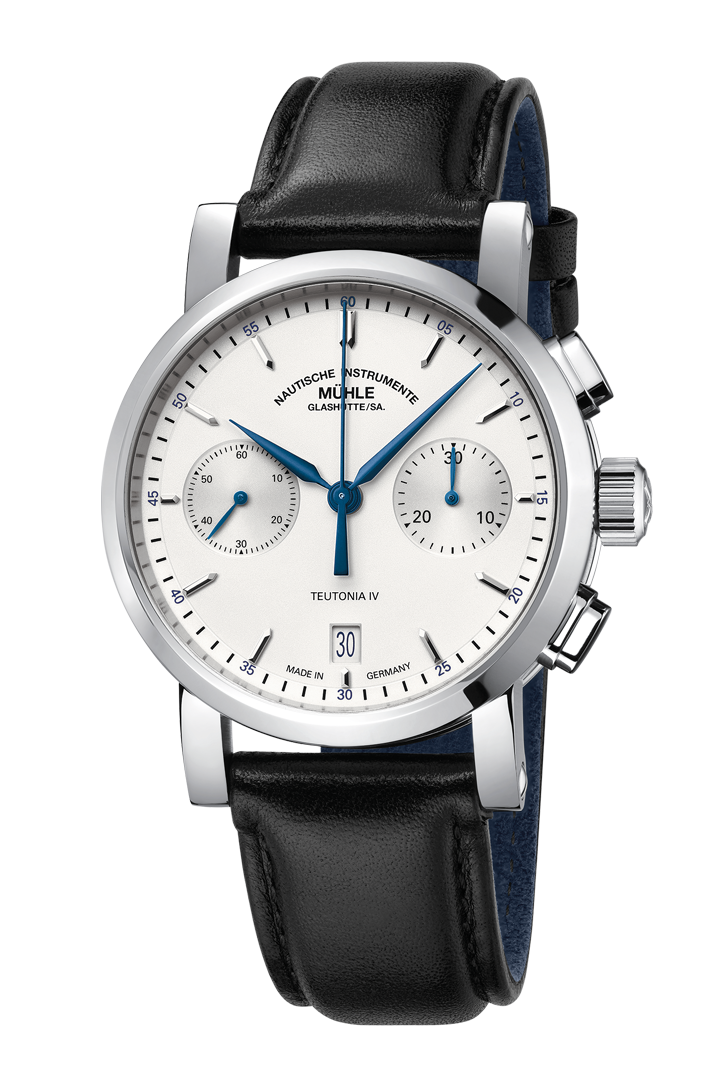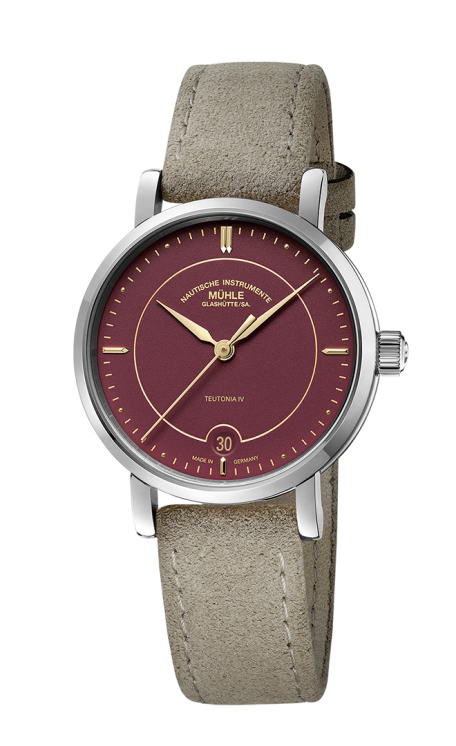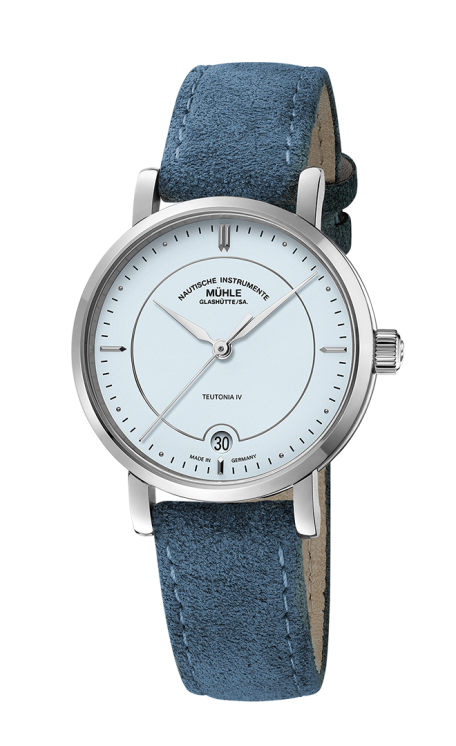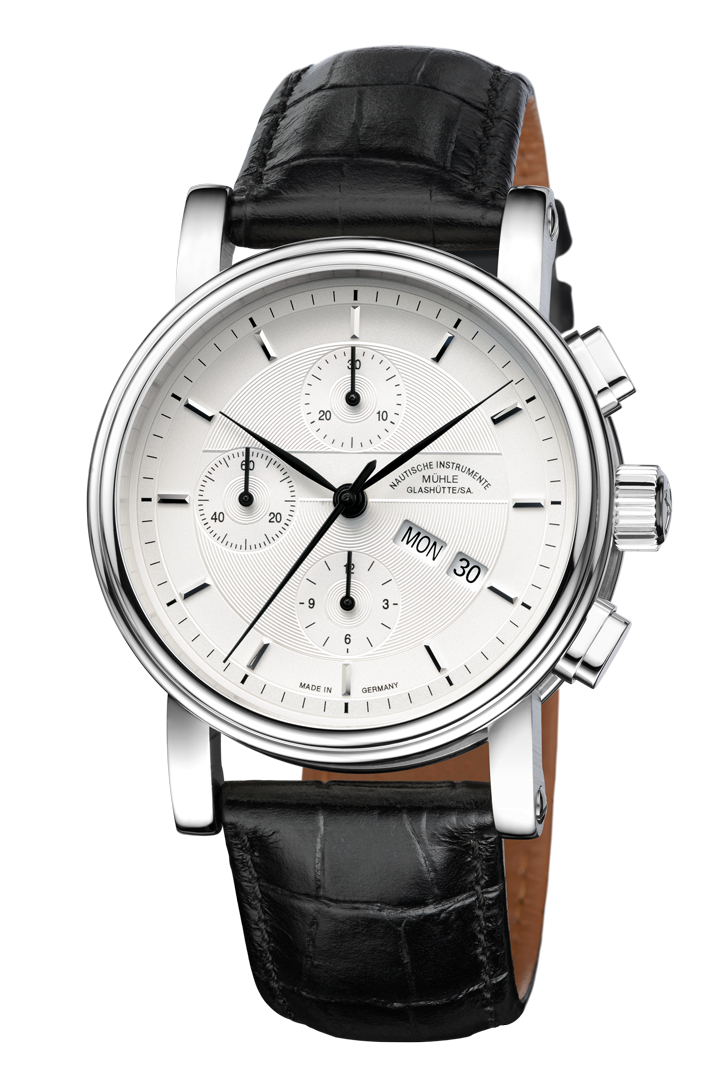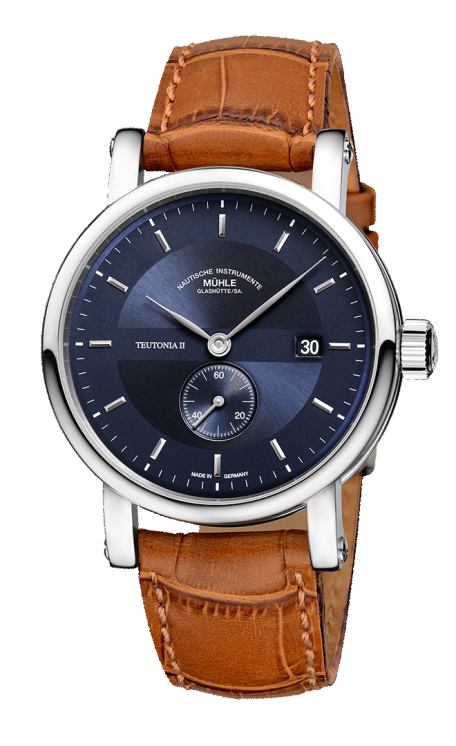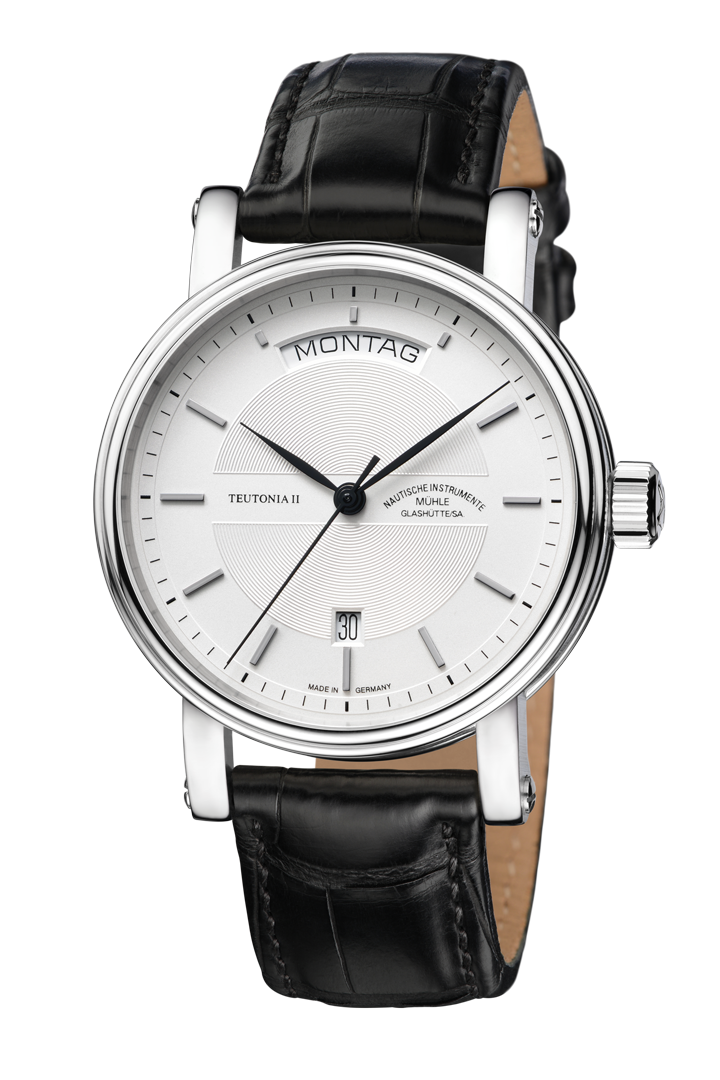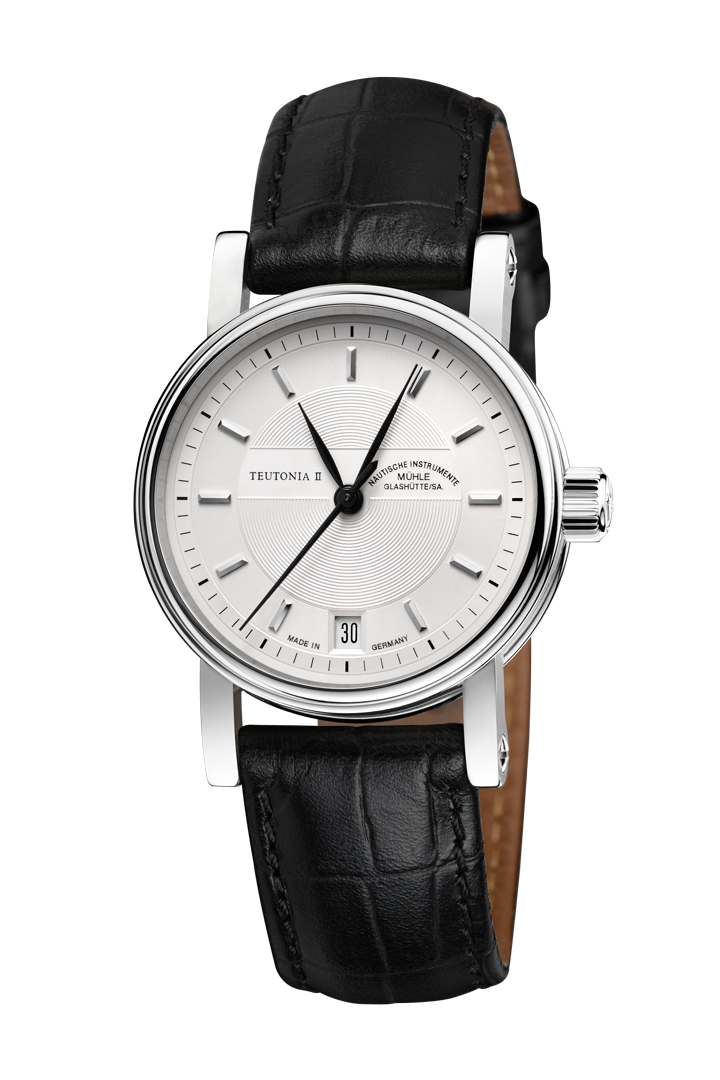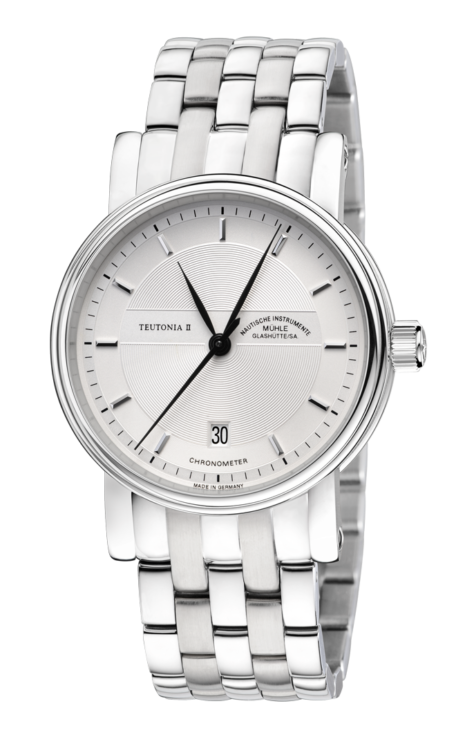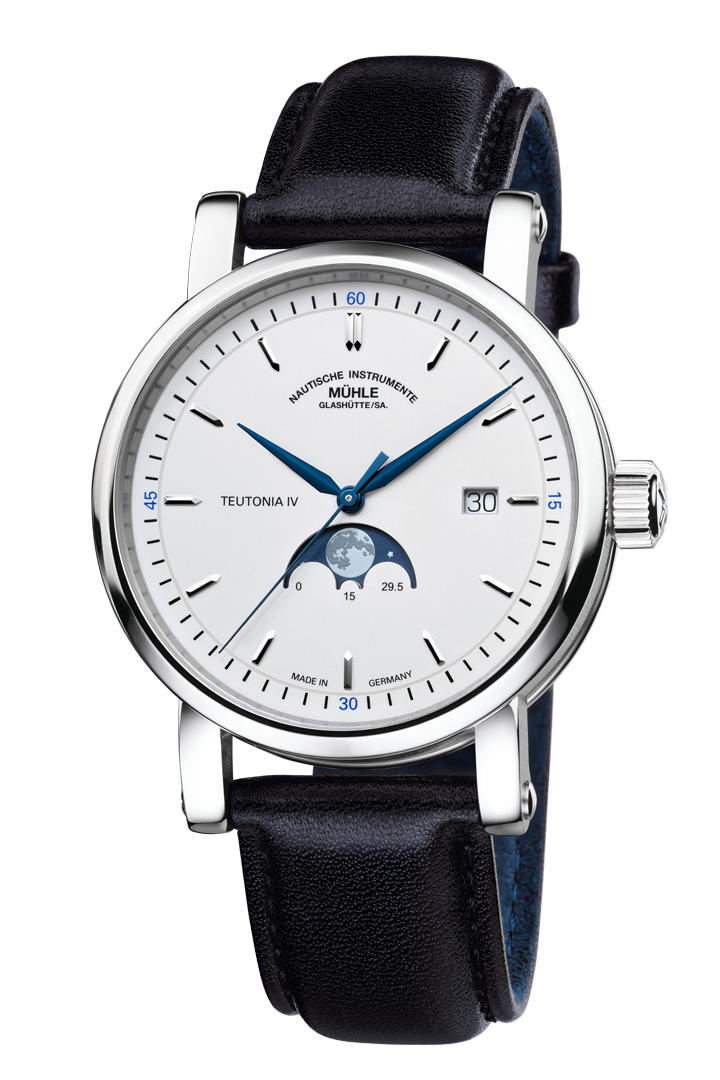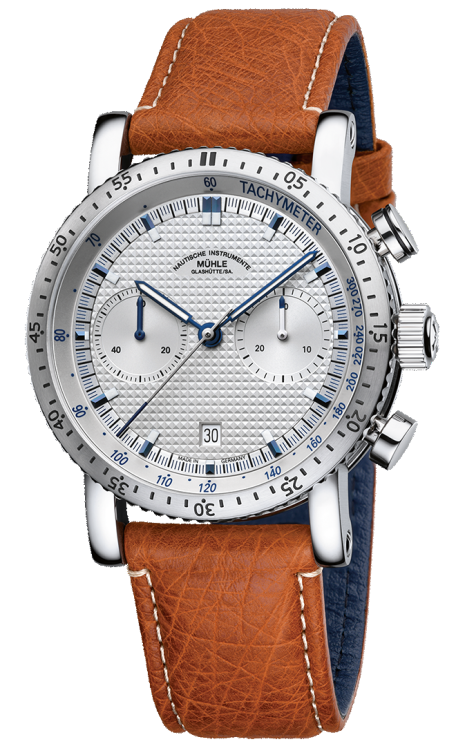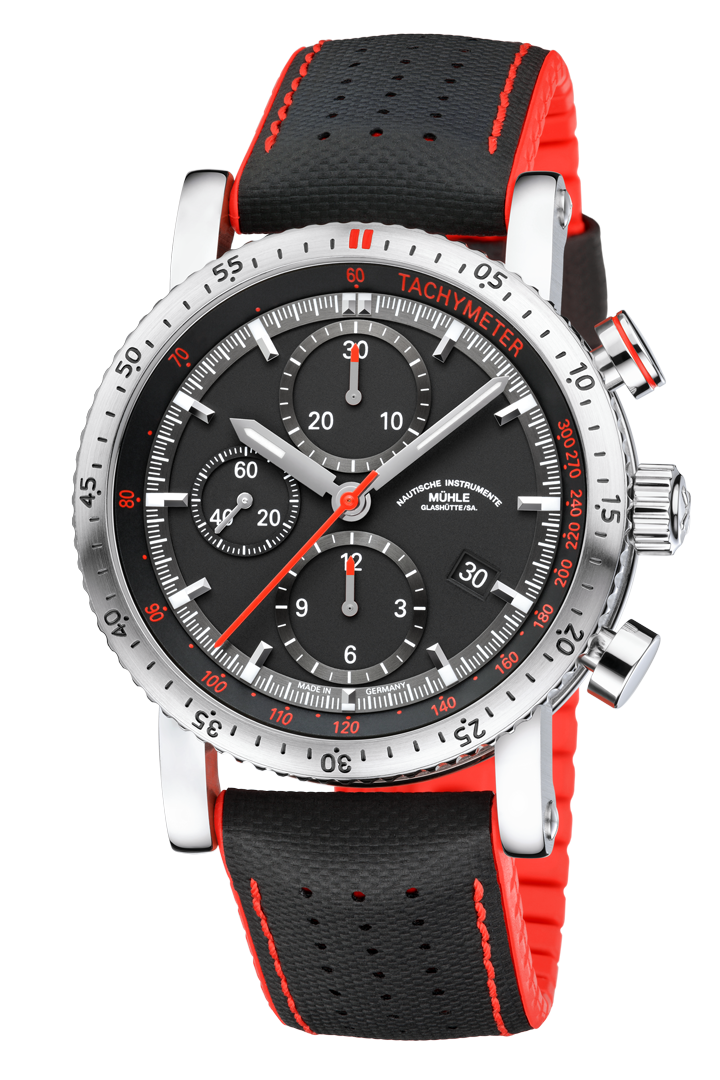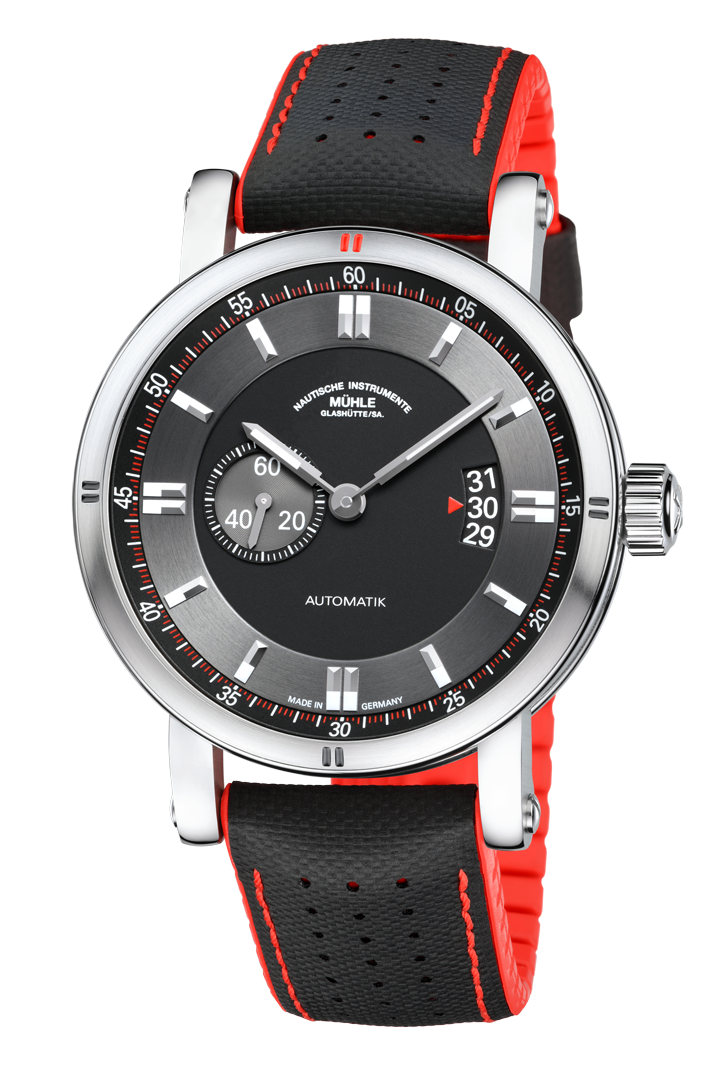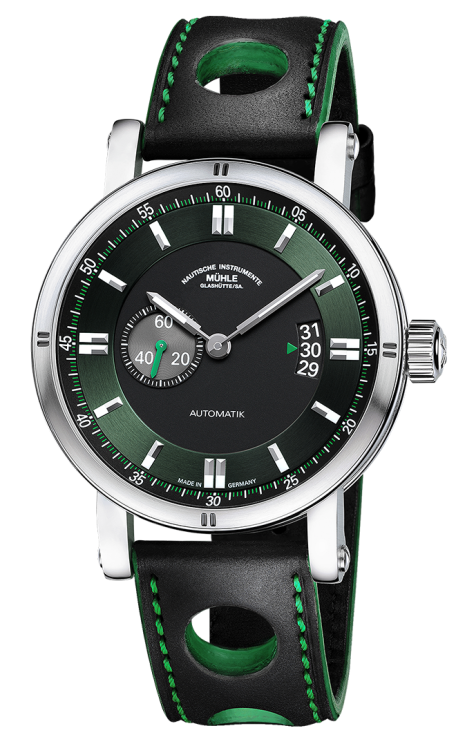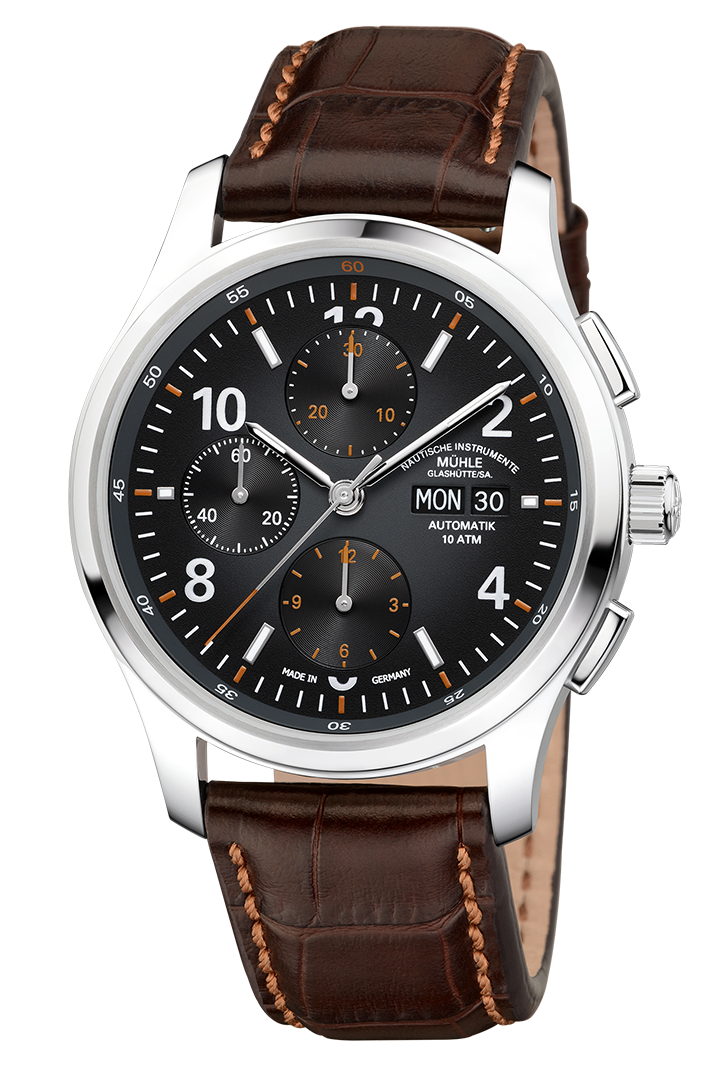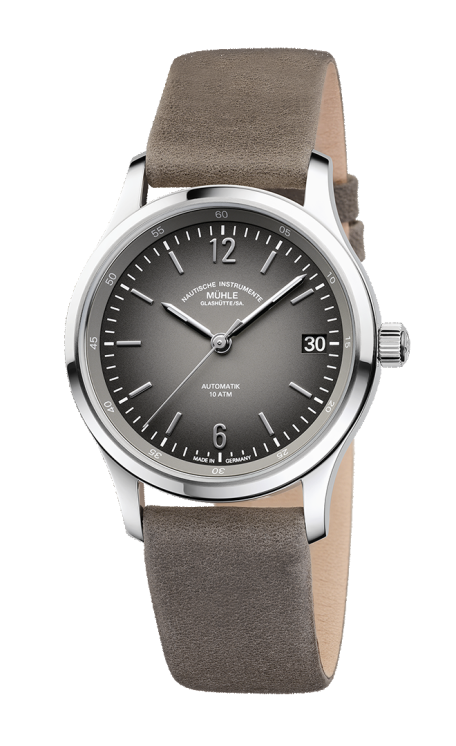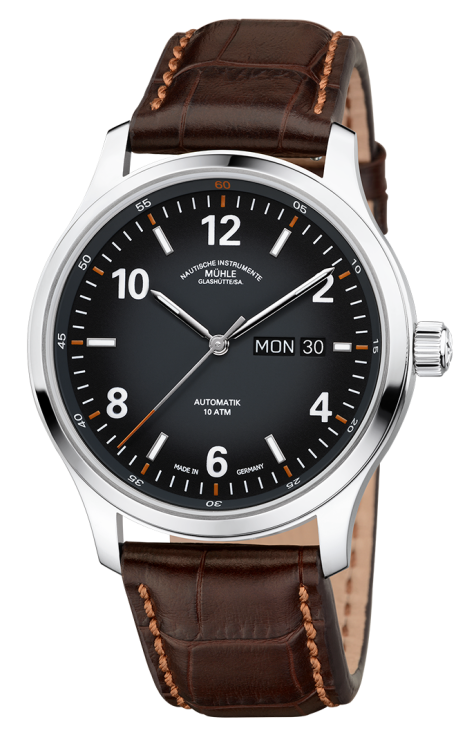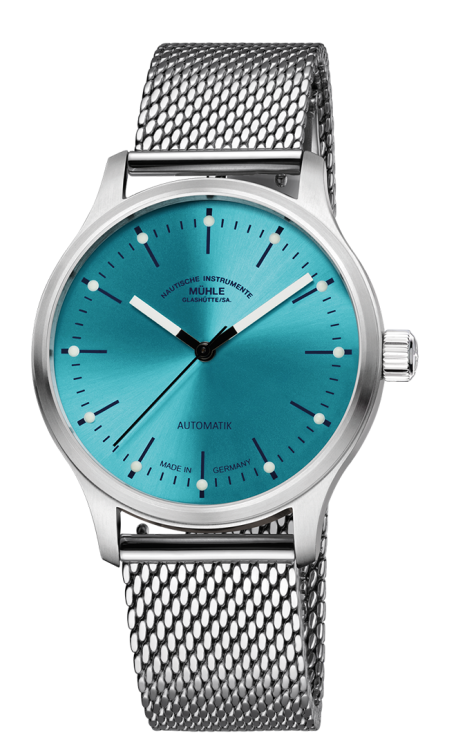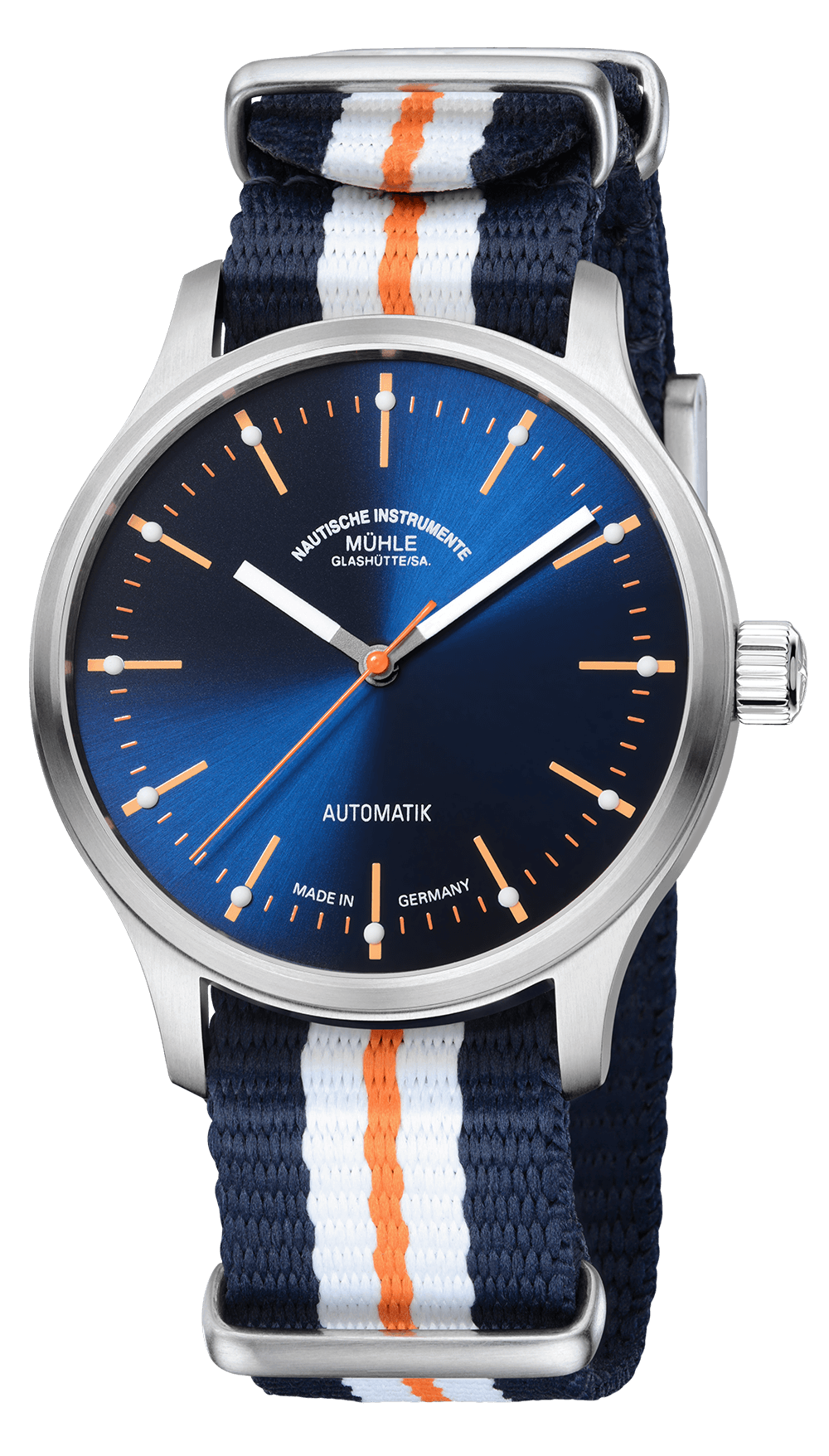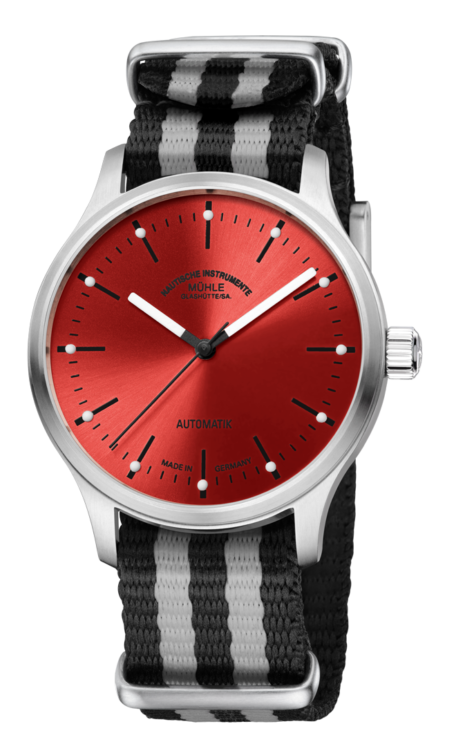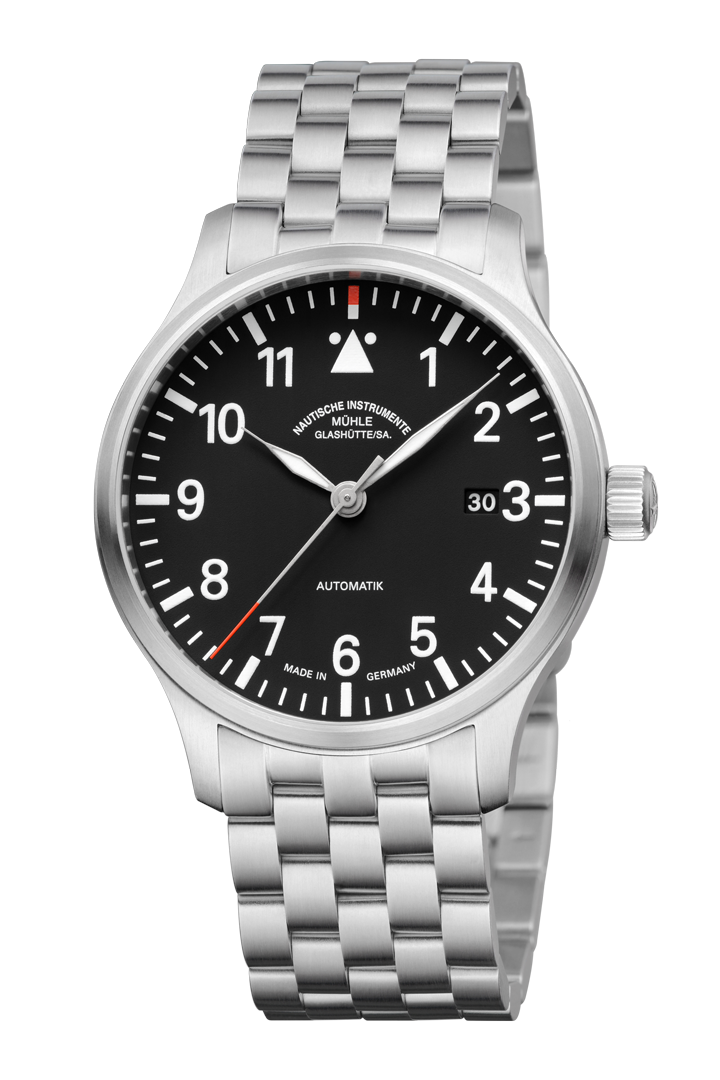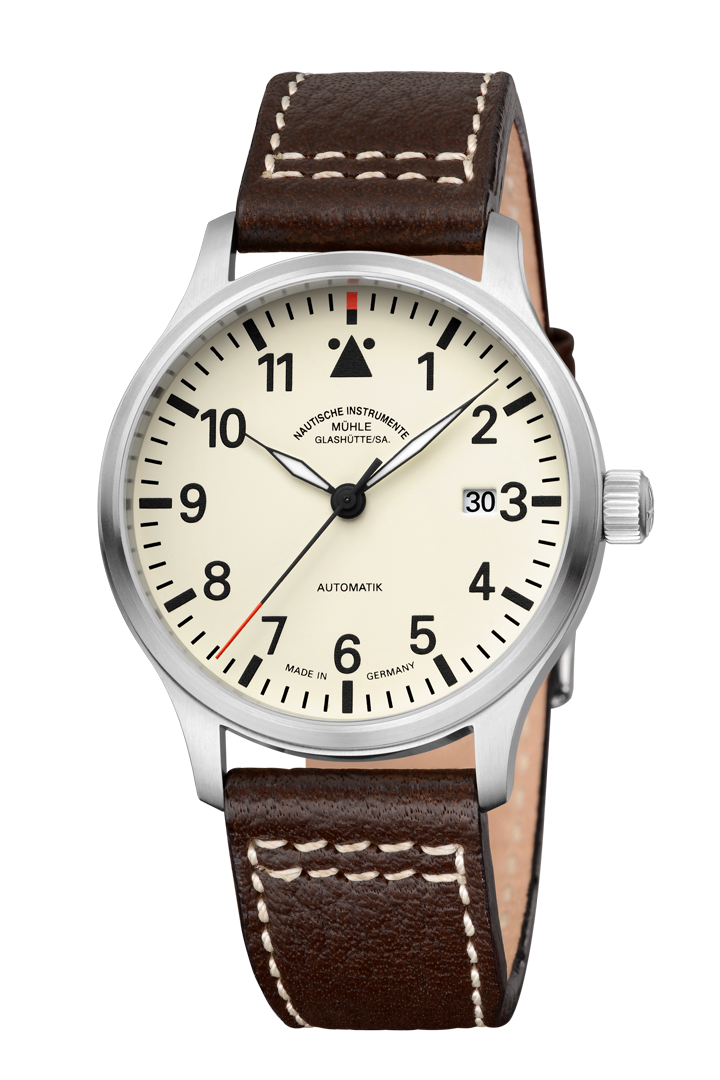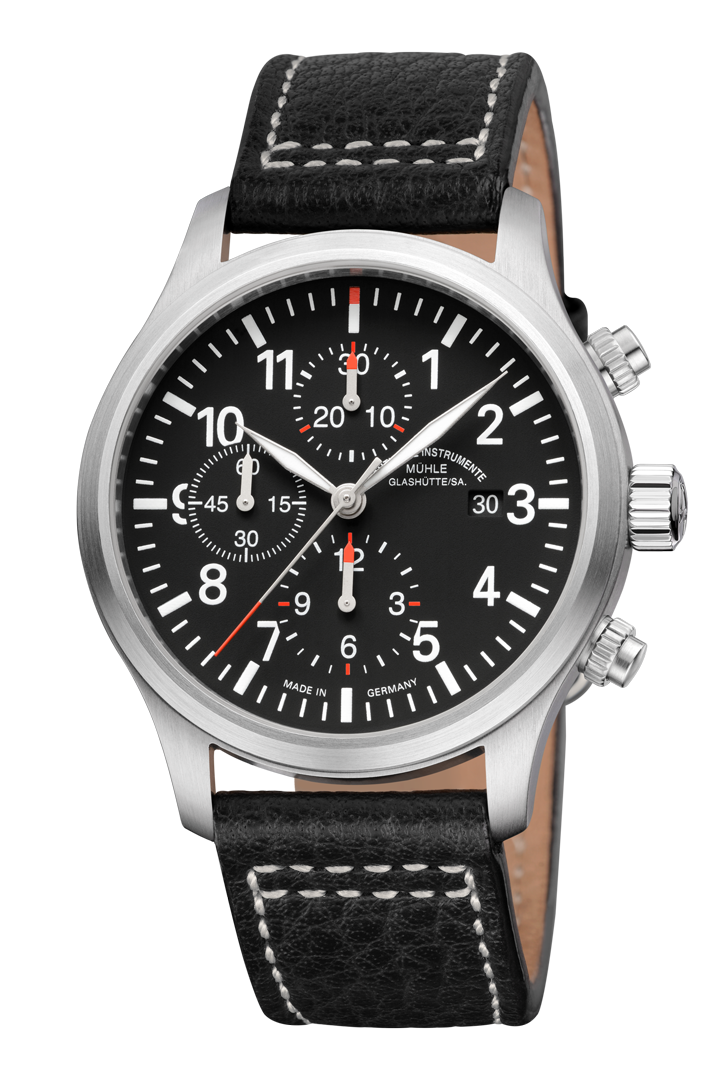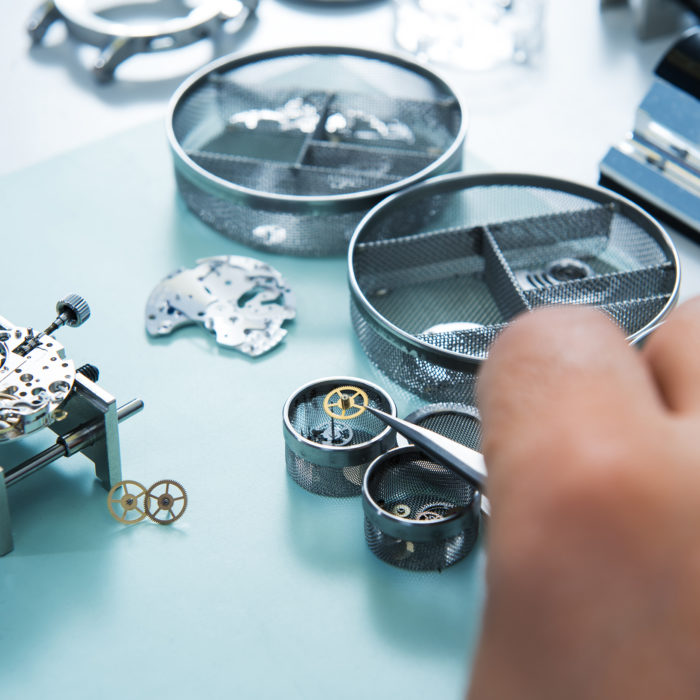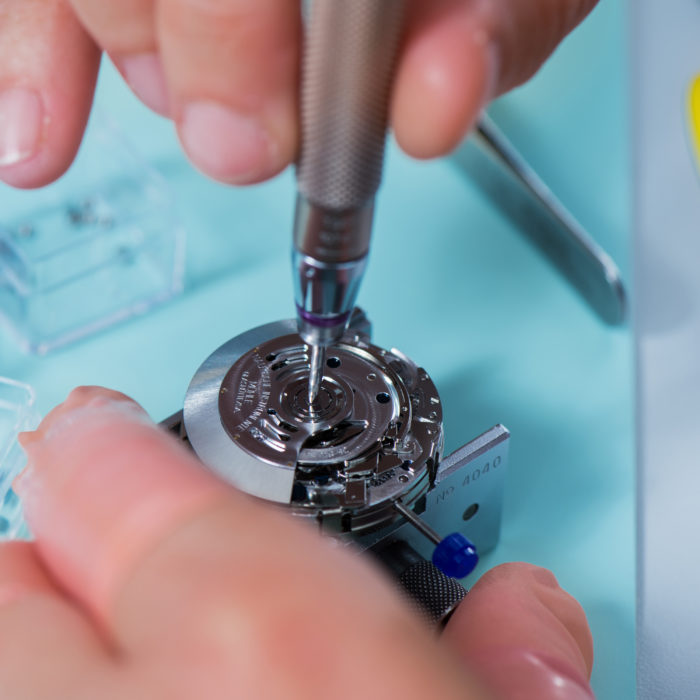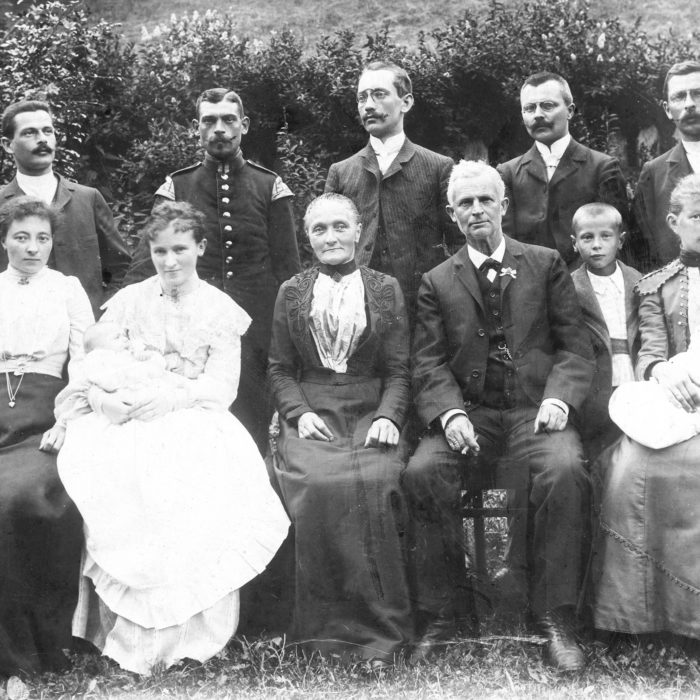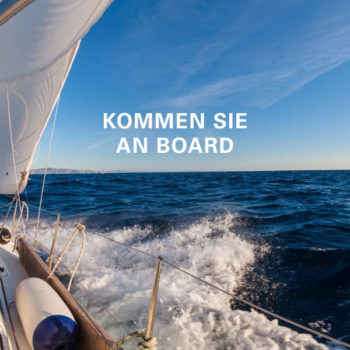In the first few years in the field of ship clocks, the development of our intelligent slave clock movements was also exciting. At the time, these were so unique and progressive that they secured us technological supremacy in automated clock systems for many years. Many well-known cruise ships and large yachts were subsequently equipped with it.
In the area of wristwatches, it is our self-developed woodpecker neck fine regulation that immediately comes to mind. It is very shockproof and offers, especially in emergency watches such as the S.A.R. Rescue-Timer and other sports watches have a real technical advantage. It is also used in the Robert Mühle calibres in our manufacture line, of which we can also be very proud.
Mr. Mühle, before founding Nautische Instrumente Mühle-Glashütte, you were also the commercial director of GUB from 1990 onwards: How did this appointment come about?
After our second company “Ing. Hans Mühle” was finally incorporated into the VEB Glashütter Uhrenbetriebe in 1980, I switched to the sales department of the GUB. I later became sales manager for the watch sector and also represented our sales director for a year, who was attending the political school during this time. After the fall of the Berlin Wall, Siegfried Bellmann, the operations director of the GUB; then asked whether I, as a non-comrade, would not want to become commercial director? Then I said “yes” on the spur of the moment.
At his suggestion, I was appointed by the Treuhand in 1990 and, as one of a total of five managing directors, was to transfer the GUB to the new economic system. It was an exciting, but also a difficult time, as the task also included handling a large part of the GUB. So everything that wasn’t “clock” was discontinued at Glashütter Uhrenbetriebe GmbH, as the GUB was now called. That nearly were 60 percent of the production.
After founding Nautische Instrumente Mühle-Glashütte, you initially produced marine chronometers and ship clocks. How did the first wristwatches come about?
After the founding of Nautische Instrumente Mühle-Glashütte, Walter Lange and Günter Blümlein often visited us. The latter was not only interested in our work, but was also interested in the expansion of the new watchmaking location. He always said to me that anyone who builds marine chronometers with such precision must also make wristwatches. In fact, at that time I already had an inquiry from a shipyard that needed robust diving watches for their ships. In 1995, for example, we developed a diving watch for the shipyard we supplied, which was intended as equipment for the ship’s crews. Encouraged by Günter Blümlein’s advice, we continued this development in 1996 with the men’s sports diving watch and a seawater-resistant marine pilot’s watch made of titanium.
What do you wish for the future of the family business Mühle-Glashütte?
Above all, of course, I would like our company to continue to exist successfully as a family business. With my son Thilo it has been in the best hands for many years and I am happy that his children and my grandchildren Fanny and Dustin are now also on board. In addition, my son Thomas, my daughter-in-law Mandy and my son-in-law Uwe have been working in the company for a long time. We can really take the term family company literally.
In addition, our marine chronometers and ship’s clocks are still very important to me. And even if we now mainly manufacture wristwatches, I would be very happy if our ship’s clocks complement this product group for a long time to come.
